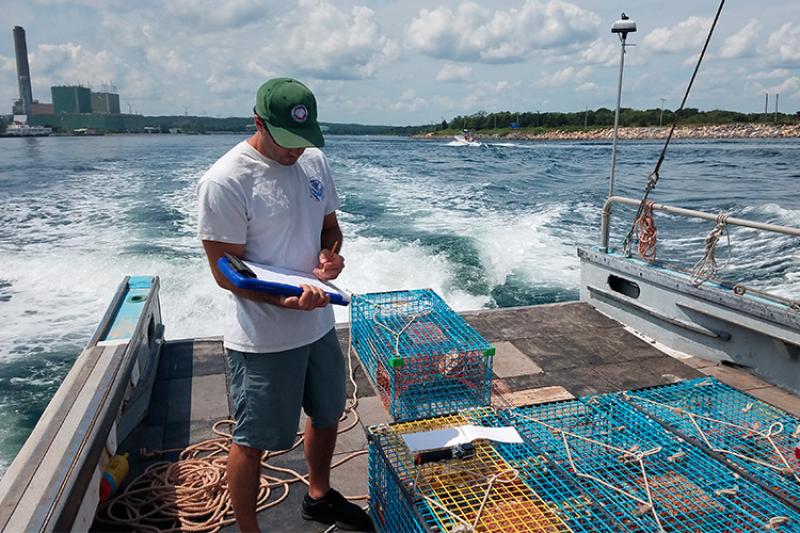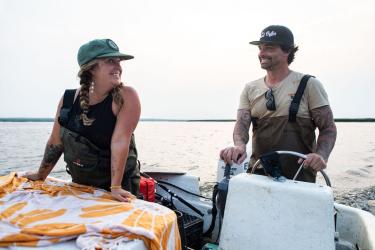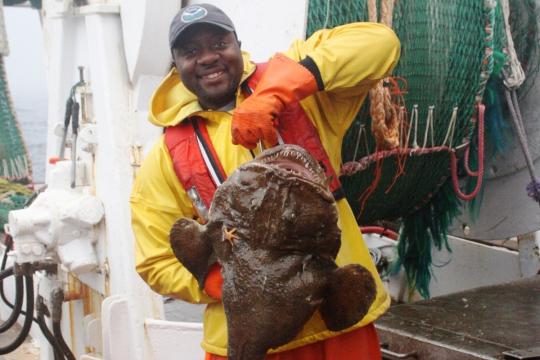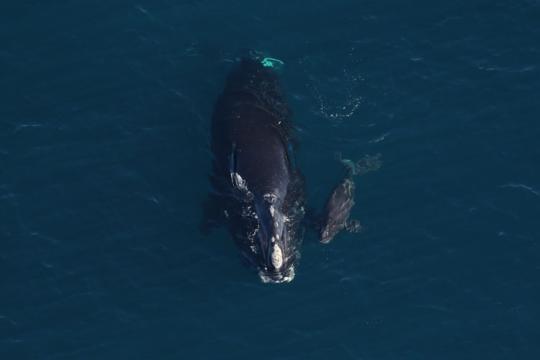Entanglement of marine mammals in fishing gear is a significant problem off the coast of New England. To reduce the number of entanglements in this area, NOAA Fisheries is investigating ways to modify lobster and crab pots and traps. These metal fishing traps on the ocean floor are connected to buoys floating at the surface by fishing rope that stretches through the entire water column. Whales and turtles swimming or feeding near the traps can become tangled in this rope, restricting their movement and threatening their lives.
To protect marine life in the Atlantic, the Northeast Fisheries Science Center and its partners are exploring ways to alter lobster and crab gear to reduce the risk of entanglement. New technology is allowing traps to go ropeless, eliminating the risk of marine mammals becoming entangled in vertical buoy lines.
Watch the video to see these traps in action and how they can help solve the devastating issue of entanglement.
Traps can now be equipped with acoustic sensors that allow fishermen to call their traps to the surface of the ocean with the press of a button. Instead of using a rope to haul the trap up, fishermen can use an on-board controller to send an acoustic signal to the trap. This releases a buoyant device that floats the trap to the surface for collection. Timed release traps are another innovation that removes ropes from lobster and crab traps. After a set amount of time, the fishing gear will float to the surface to be retrieved by fishermen as usual.
While several species are at risk of entanglement in fishing gear, entanglements are particularly threatening to the endangered North Atlantic right whale. Reports suggest that more than 85 percent of right whales have been entangled at least once. Becoming entangled in heavy fishing gear can severely stress and injure a right whale. It can make it difficult to feed, swim, or breathe, reduce the likelihood it will have offspring, and ultimately lead to its death.
With ropeless traps, NOAA Fisheries aims to ensure the protection of marine life while continuing to promote sustainable fisheries. Because this technology is still in development, feedback from fishermen about ropeless traps has been invaluable. Together, innovation and collaboration can bring about solutions for whales and fishermen alike.








